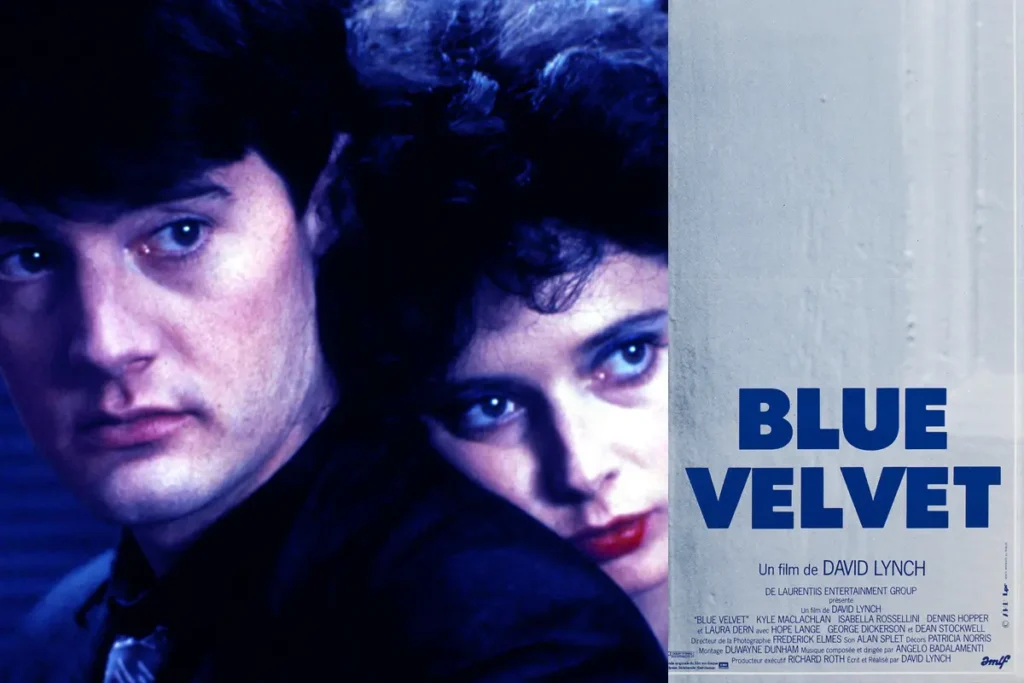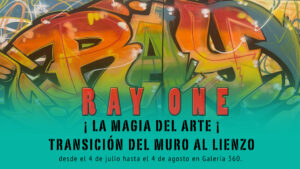By Juan Butten
The first time I saw Blue Velvet was thanks to a recommendation from Mr. Armando Almánzar, with whom I met several times at Video Europa, one of the coolest video rental stores in Santo Domingo around the beginning of 1999 to 2000. Video Europa wasn’t just a place to rent movies; it was a gathering spot for cinephiles like me, always in search of something beyond the conventional. There, I ran into various personalities from Dominican culture, as well as film critics like Arturo Rodríguez Fernández, whom I would ask for movie recommendations. He generously suggested two or three, since I was always looking for something out of the ordinary, something that would shake me, something that would make me think. Thanks to him, Blue Velvet is, without a doubt, one of the most fascinating works for me by David Lynch.
From the very start, the film captivated me with its unique atmosphere, difficult to describe. It reminded me of a movie I had already seen, Tierra (1996) by Julio Medem, which in my opinion was influenced by the opening of Blue Velvet. In both, the camera moves into the garden and dives into the earth in a very cool way, but soon reveals that beneath that facade something much darker is hidden. This duality between the beautiful and the disturbing is one of Lynch’s trademarks. From the first few minutes, the film not only introduces the plot but also delivers a powerful declaration of intent: this is a world where light and shadow intertwine, unveiling the deepest contradictions of the human condition.
The story begins when Jeffrey Beaumont (Kyle MacLachlan), a young man returning home after visiting his father in the hospital, finds a severed human ear in a cornfield. This macabre discovery introduces him to a mystery that connects him with Dorothy Vallens (Isabella Rossellini), a singer trapped in an abusive relationship with Frank Booth (Dennis Hopper), a violent and disturbing criminal. From there, Jeffrey is dragged into a world of violence, desire, and dark secrets that reveal that life in the suburbs is not as innocent as it seemed. It’s a place that, in its apparent tranquility, hides much more than mere appearances, where we discover a much darker reality.
What impressed me most about Blue Velvet was how Lynch manages to create a dense and unsettling atmosphere through his visual and auditory style. Each scene seems designed not just to tell the story, but to disturb the viewer. Throughout the film, we see a contrast between the superficial beauty of the city of Lumberton, which seems like an ideal model of suburban life, and the underlying corruption that lurks beneath its surface. The color blue, present both in the title and the film, symbolizes this duality: on the one hand, a soft and luxurious beauty, but on the other, a dangerous and sinister darkness hiding behind the perfect facade. It’s as if the blue velvet, with its softness and elegance, hides something much more macabre inside.
As the film progresses, Jeffrey is pushed to explore the limits of his own morality and desire. Faced with characters like Dorothy and Frank, he begins to question himself and delves into a side of life he never imagined. In this sense, Blue Velvet invites us all to look beyond the surface, to confront what is normally hidden in the shadows. The relationship between Jeffrey and Sandy (Laura Dern), a young woman who represents purity and idealized love, contrasts sharply with the relationship between Dorothy and Frank, who are trapped in a spiral of violence and control.
One of the most striking aspects of Blue Velvet is the figure of Frank Booth, masterfully portrayed by Dennis Hopper. Frank is not just a violent villain, but a deeply disturbing character in his relationship with power, sex, and domination. The way Lynch presents him, with his overflowing aggression and disturbed need for control, makes him one of the most terrifying antagonists in contemporary cinema. Frank represents chaos, destruction, and the abuse of power, pushing human relationships to their darkest extremes.
Blue Velvet does not shy away from tackling themes such as sexuality and violence in a raw and explicit way. The relationship between Dorothy and Frank, marked by sexual violence and domination, is unsettling, but not gratuitous. Lynch uses these scenes to explore the struggle for power, submission, and desire in human relationships. Through these characters, the director forces us to reflect on our own contradictions and repressed desires. While Jeffrey feels drawn to Dorothy’s dangerous sexuality, he also feels the urge to rescue her. But, can he truly save her? And is he prepared to face the darkness she represents? Lynch never gives us easy answers, but he does invite us to question the nature of desire, power, and morality.
The visual style of Blue Velvet is another of its great strengths. Cinematographer Frederick Elmes creates a surreal and disturbing atmosphere, blending beauty and unease in a single image. Close-ups of flowers, clear skies, and quiet streets are interspersed with images of violence, creating a visual dissonance that reflects the underlying tensions in the plot. Furthermore, Angelo Badalamenti’s music, especially the famous Bobby Vinton song Blue Velvet, becomes a leitmotif that highlights the disconnection between the appearance of perfection and the hidden reality. The melancholic melody of the song, along with the unsettling sounds and carefully placed silences, amplifies the tense atmosphere that defines Lynch’s cinema.
With Blue Velvet, Lynch not only created a psychological thriller but also a profound reflection on light and darkness in human nature. The film remains relevant almost four decades after its release because it questions power structures, the fragility of appearances, and the internal struggle between morality and desire. Through this work, Lynch establishes himself as one of the great masters of contemporary cinema, capable of exploring the surreal and disturbing to reach the deepest parts of the human psyche.
The legacy of Blue Velvet is clear: it is not just a film, but a sensory experience that invites the viewer to look beyond the visible, to confront the shadows that lurk deep within us. Not only did it impact me at the time, but it remains an indispensable reference for those who seek to understand the complexities of human nature and its contradictions. Lynch invites us to see that what seems safe and perfect can crumble in an instant, revealing a much darker and more complicated world than we ever imagined.









